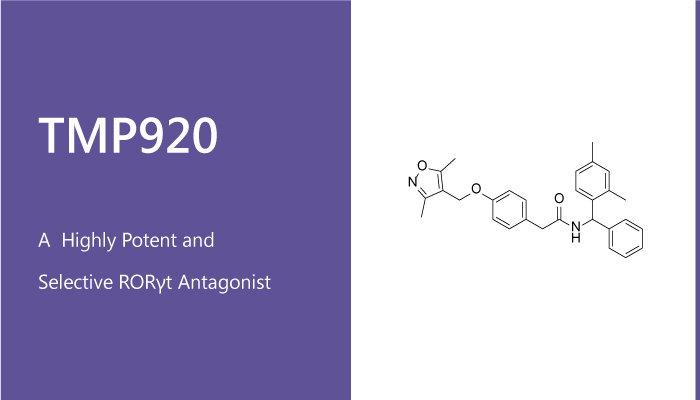Th17 cells are third subset of CD4+ T effector cells in organ-specific autoimmunity. Th17 cells not only differ from Th1 and Th2 cells by the cytokines they produce but also by the mechanisms that drive their differentiation. Especially, Th17 cells play an important role in chronic inflammation and autoimmune diseases. RORγt acts both as a direct activator of Th17 cell signature genes. Moreover, RORγt acts as a direct repressor of signature genes from other T-cell lineages. Th17 cells also promote inflammatory colitis. Besides, IL17 and thus possibly Th17 cells are protective in a Th2-dependent asthma model. The nuclear hormone receptor retinoic acid receptor-related-orphan-receptor-gamma t (RORγt) is the key transcription factor for Th17 cell differentiation and for the production of IL-17 family cytokines. In particular, TMP920 is a highly potent and selective RORγt inhibitor.
RORγt plays a central role in Th17 cell function and is a nuclear receptor with a ligand-binding pocket. Therefore, RORγt is an attractive pharmacologic target for the treatment of Th17 cell-mediated immune disorders. RORγt promotes Th17 cell differentiation and is essential for the development of Th17 cells. RORγt-specific inhibitors that suppress T helper 17 (Th17) cell responses including Th17 cell-mediated autoimmune disease. RORγt inhibitors suppress Th17 cell differentiation and maintenance and ameliorate experimental autoimmune encephalomyelitis (EAE). TMP920 is a RORγt inverse agonist.
RORγt inverse agonist.
TMP920 inhibits RORγt binding to the SRC1 peptide in the FRET assay with an IC50 of 0.03 μM. The IC50 for TMP920 in RORγ assays is 1.1 μM. TMP920 significantly reduces the occupancy of RORγt at the majority of its target genomic elements.